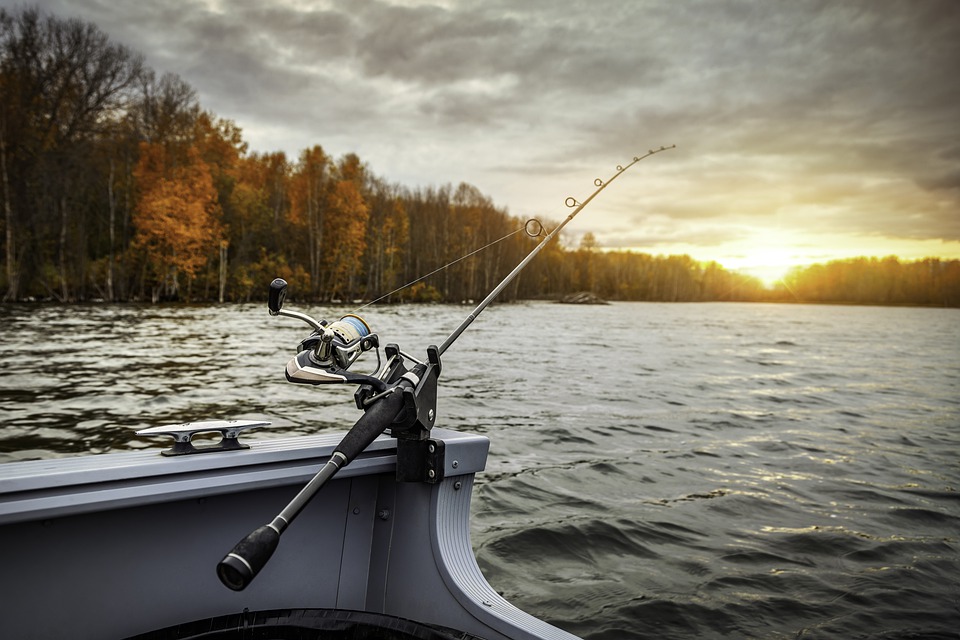I don’t mean to brag, but I consider myself to be a pretty good angler. After all, I got help from the dad, who was a pro in his own right.
However, it wasn’t always plain sailing – after a tiring day, I would often return home empty-handed. It was then that my father taught me the importance of choosing the right action for my fishing rod.
How Do I Choose The Right Action For My Fishing Rod?
There are three rod actions based on where the rod bends – fast, medium, and slow. Fast action rods bend the least, but are highly sensitive while medium actions bend more, suitable for catching speedy fish. And of course, slow-action rods show maximum flexibility – making them ideal for casting light lures.
But this is just an overview; several other factors impact rod action. To know more, come with me as I explain the intricacies of this technique.
Let’s catch some big fish!
Which Is The Best Rod Action?
In layman’s terms, action is the point where the rod bends, depending on the pressure you apply while fishing. Choosing the wrong action causes the line to snap and the fish to get away, so your decision-making must be spot on.
Now, what are the advantages of each rod action? Fast action rods are incredibly sensitive, allowing anglers to instantly sense when they have made a catch. Hence, use this rod to ensure that the lure reaches deep and close to the bottom, increasing your chances of making a catch.
On the flip side, it’s not the best option for catching feisty or heavy fish species as they might break the line. In such scenarios, you can use a medium-action rod that works well with moving baits and lures.
It compromises on rod sensitivity, but that’s okay as fast-moving fish aren’t difficult to detect. Moreover, the line travels further and produces a beautiful arc, useful for reeling in lures when fighting the fish.
On the other hand, when fishing for trout or panfish, I suggest opting for slow-action rods that bend further. You can use light lures and a light line to wrestle the fish without breaking the rod.
Factors Impacting Rod Action
Once I learned the intricacies of rod action, my father was quick to point out other factors that impact fishing. I have noted them below, explaining how attributes like length and power affect the rod action.
1. Length
The rod length depends upon your height and personal preference, but it would be best to choose an appropriate model based on the former. After all, size will impact the action as the point of bending varies according to the length.
A short person needs to use a shorter rod as it might prove challenging to wield a longer line. It will be perfect for angling near rocks and the tree line. On the contrary, a long rod is useful for fishing away from the shore.
Most anglers opt for a 6’6″ or a 7′ rod as these are the most versatile models, having medium action. And below 6′, rods have small action and are suitable for beginners, learning to catch trout or panfish.
With a longer rod, you can catch salmon or steelhead, as its fast action is handy for bass fishing techniques.
2. Power
Rod power is the pressure needed to make a rod bend. Be it ultra-light or extra-heavy, a rod’s power determines what lure to use, what fish you can catch, and the most suitable fishing line.
While a light-action rod bends easily, you need to apply more effort to bend a heavy rod. Consequently, a lighter rod has a small action, and you need to use light lures. But it has substantial power, making it perfect for people who like to challenge themselves while fishing.
Meanwhile, medium power rods are widely in vogue, thanks to their versatile fishing techniques. It’s also possible to use a light lure, similar to a small rod, without compromising on the medium model’s greater power to land large fish.
Finally, with a heavy-action rod supporting the weight of bigger lures, you can go after fish, like tuna that weigh more.
Conclusion
That’s all there is to know about choosing the right action for your fishing rod.
Before the fishing trip, it would be best to research the area, the dominant fish species, weather conditions, and what lures to use. This will help you pick the right rod for a successful fishing trip.
I’ll leave you with this tip my father shared: be patient and let the fish come to you. Until next time, bye!

Niels Thomas is a wildlife expert and fishing fanatic that works with major fishing brands like Deeper Sonar, Abu Garcia, Berkley, PENN, BassPro and Pure Fishing. Through sharing the best fishing tips, tricks, gear reviews, locations and much more he hopes to inspire fishing fanatics to start their own journey towards becoming the King of the Catch!

